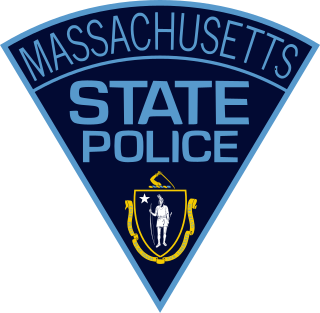
The New Zealand Police is the national police force of New Zealand, responsible for enforcing criminal law, enhancing public safety, maintaining order and keeping the peace throughout New Zealand. With over 11,000 staff it is the largest law enforcement agency in New Zealand and, with few exceptions, has primary jurisdiction over the majority of New Zealand criminal law. The New Zealand Police also has responsibility for traffic and commercial vehicle enforcement as well as other key responsibilities including protection of dignitaries, firearms licensing and matters of national security.
Suicide by cop or suicide by police is a suicide method in which a suicidal individual deliberately behaves in a threatening manner, with intent to provoke a lethal response from a public safety or law enforcement officer.
Concealed carry or carrying a concealed weapon (CCW), is the practice of carrying a weapon in public in a concealed manner, either on one's person or in close proximity. Not all weapons that fall under CCW laws are lethal. For example, in Florida, carrying pepper spray in more than a specified volume of chemical requires a CCW permit, whereas everyone may legally carry a smaller, “self-defense chemical spray” device hidden on his person without a CCW permit. As of 2018 there have been 17.25 million concealed weapon permits issued in the United States.
The Specialist Firearms Command, SCO19, is the firearms unit within Greater London's Metropolitan Police Service (MPS). The Command is responsible for providing a firearms-response capability, assisting the rest of the service which is not routinely armed.
A firearms unit is an armed unit within each territorial police force in the United Kingdom. For the most part, the police forces of the United Kingdom are unarmed; however, all have firearms units to provide the police force with the capability to deal with terrorists and armed criminals. A police officer cannot apply to join the firearms unit without first finishing their two-year probationary period, with a further two years in a core policing role for some forces. Firearms unit is the most common name outside of the capital, while that of London's Metropolitan Police Service is called the Specialist Firearms Command, Trojan or SC&O19. Within the media it is sometimes compared to the SWAT units of the United States.

The United States Department of Veterans Affairs Police is the uniformed law enforcement service of the U.S. Department of Veterans Affairs, responsible for the protection of the VA Medical Centers and other facilities such as VA Medical Centers (VAMC), Outpatient Clinics (OPC) and Community Based Outpatient Clinics (CBOC) operated by United States Department of Veterans Affairs and its subsidiary components of the Veterans Health Administration (VHA) as well as the National Cemetery Administration (NCA) and the Veterans Benefits Administration (VBA) respectively. The VA Police have several divisions and operate separately but alongside the VA Law Enforcement Training Center under the umbrella of the Office of Security and Law Enforcement. The primary role of VA Police is to serve as a protective uniformed police force in order to deter and prevent crime, maintain order, and investigate crimes which may have occurred within the jurisdiction of the Department or its federal assets. Some cases are investigated in conjunction with agents from the Office of the Inspector General.
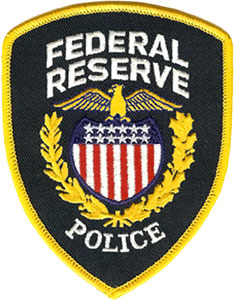
The U.S. Federal Reserve Police is the law enforcement unit of the Federal Reserve System, the central banking system of the United States.

Concealed carry, refers to the practice of carrying a handgun or other weapon in public in a concealed or hidden manner, either on one's person or in close proximity. While most law enforcement officers carry their handguns in a visible holster, some officers, such as plainclothes detectives or undercover agents, carry weapons in concealed holsters. In some countries and jurisdictions, civilians are legally permitted to carry concealed handguns; in some, this may be the only legal way for a civilian to carry a handgun.
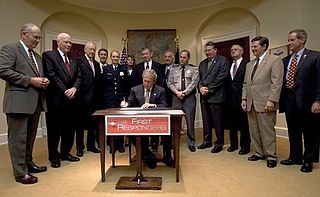
The Law Enforcement Officers Safety Act (LEOSA) is a United States federal law, enacted in 2004, that allows two classes of persons—the "qualified law enforcement officer" and the "qualified retired or separated law enforcement officer"—to carry a concealed firearm in any jurisdiction in the United States, regardless of state or local laws, with certain exceptions.
Nearly 250,000 licensed firearms owners own and use New Zealand's estimated 1.5 million firearms. As in Australia, but unlike the US and Canada, gun laws usually gain the support of both major parties before they are passed. Guns are not currently a major political issue, but have been immediately after the Aramoana massacre in 1990, and the Scottish Dunblane and Australian Port Arthur massacres in 1996.
The Saiga semi-automatic rifles are a family of Russian semi-automatic rifles manufactured by Kalashnikov Concern, which also manufactures the original AK-47 and its variants, Saiga-12 shotguns and Dragunov sniper rifle. Saiga rifles are a sport version of the Kalashnikov rifle, and are marketed for hunting and civilian use. They are sometimes referred to as Saiga Sporters.

The East Baton Rouge Parish Sheriff's Office (EBRSO) is the primary law enforcement agency of East Baton Rouge Parish, and has jurisdiction anywhere in the parish. It falls under the authority of the sheriff, who is the chief law enforcement officer of the parish. The sheriff's office employs approximately 850 deputies, making it one of the largest law enforcement agencies in the state of Louisiana.
Law enforcement in New York State is the responsibility of a very large number of law enforcement agencies. Law enforcement is conducted by police departments and or peace officers agencies, fire departments, sections of other government departments, educational institutions, private companies, and charities at federal, state, county, city, town, and occasionally village levels.

Department of the Army Civilian Police are the uniformed civilian police officers of the United States Army. They are also referred to as DoD Police. The Department of the Army Civilian Police (DACP) are responsible for law enforcement on U.S. Army–owned and –leased buildings, facilities, properties and other U.S. Army assets. It is important to note that "Department of Defense Police" is a phrase that refers to any civilian engaged in police duties for the Department of Defense and its component branches of the US Armed Forces. There is no one unified agency that goes under the title "Department of Defense Police". There are several police forces that use the title "DoD police", such as the Pentagon Police, Defense Logistics Agency Police, Navy Civilian Police (NCP), Army Civilian Police (DACP), Marine Corps Civilian Police (MCCIVPOL) and Air Force Civilian Police (DAFCP).

Firearm laws in Arizona regulate the sale, possession, and use of firearms and ammunition in the state of Arizona in the United States.

Gun laws in Massachusetts regulate the sale, possession, and use of firearms and ammunition in the Commonwealth of Massachusetts in the United States.
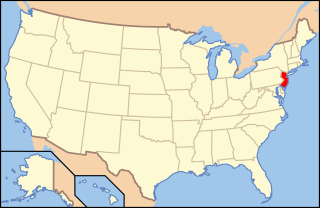
Gun laws in New Jersey regulate the sale, possession, and use of firearms and ammunition in the U.S. state of New Jersey. New Jersey's firearms laws are among the most restrictive in the country; some of which are being challenged in state and federal courts.
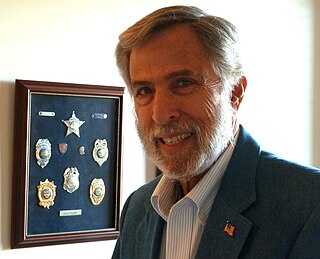
Charles Henle "Chuck" Klein, Jr., is an American author, best known for writing about police ethics, the technique of instinct combat shooting, and hot rods. He is also a firearms instructor, a former law enforcement officer and a retired private investigator.

The Connecticut State Environmental Conservation Police,, is a Division within the Connecticut Department of Energy and Environmental Protection (DEEP) and serves as the primary law enforcement agency on all DEEP properties that include 65 state parks, 27 state forests, 10 wildlife management areas and all state waterways. Officers assigned to the EnCon Police are appointed under Connecticut General Statutes Chapter 490, §26-5 with their law enforcement authority derived from §26-6.

